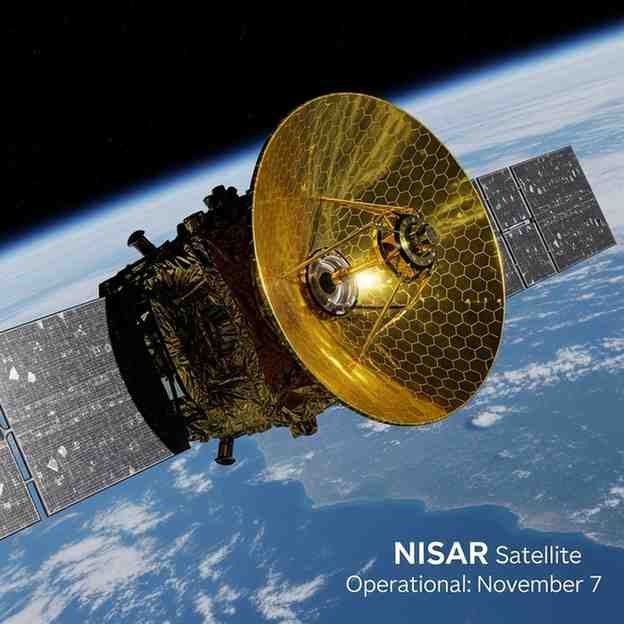
- India and the United States are set to achieve a major milestone in space cooperation as the NASA–ISRO Synthetic Aperture Radar (NISAR) satellite becomes operational on November 7, 2025 , following completion of calibration processes, ISRO Chairman V. Narayanan confirmed.
1. About NISAR
-
Full Form: NASA–ISRO Synthetic Aperture Radar
-
Launch Date: July 30, 2025
-
Launch Vehicle: GSLV (Geosynchronous Satellite Launch Vehicle)
-
Weight: Around 2,400 kg
-
Agencies Involved: NASA (USA) and ISRO (India)
-
Operational Date: November 7, 2025
2. Mission Objective
NISAR aims to provide high-resolution Earth observation data for:
-
Climate monitoring and environmental mapping
-
Tracking land deformation, glaciers, and forest cover
-
Studying natural hazards like earthquakes, landslides, and floods
The satellite will help scientists understand how Earth’s ecosystems and surfaces change over time, supporting disaster management and climate research.
3. Advanced Radar Technology
-
Dual-band SAR systems:
-
L-Band Radar – Developed by NASA , studies soil moisture, forest biomass, and ice sheets.
-
S-Band Radar – Developed by ISRO , monitors vegetation, snow cover, and agriculture.
-
Key Feature: First satellite in the world to carry two radar bands simultaneously .
-
Coverage: Can scan most of Earth’s land and ice surfaces twice every 12 days , providing continuous, day-and-night observation.
4. Scientific and Environmental Importance
NISAR’s data will help in:
-
Monitoring glacier retreat and forest changes
-
Understanding tectonic shifts causing earthquakes
-
Supporting agriculture and resource management
-
Strengthening global climate change studies
5. Exam-Oriented Highlights
Month: Current Affairs - November 06, 2025
Category: Science & Technology / Space Technology